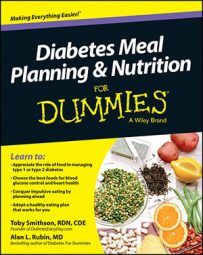About 20 percent of your daily calories should come from protein, although your personalized diabetic meal plan could vary somewhat from that. Nevertheless, protein is an important macronutrient for building and repairing tissue, to create enzymes which accelerate important biochemical reactions, and for constructing important hormones like insulin.
Proteins are assembled from amino acids, and there are 20 specific amino acids your body needs to build all the different proteins you need. The protein in your diet is broken down into its various amino acids during digestion, and your body recycles those amino acids to make your proteins from scratch.
You can even make some amino acids by modifying other amino acids in some cases, but there are nine amino acids you must get intact from your diet — these nine are referred to as essential amino acids.
When considering which foods supply all of the essential amino acids in a useable form, and in sufficient quantity, there really are perfect proteins — they are called complete proteins. And, there are scoring systems, one of which is called the protein digestibility corrected amino acid score.
By this scoring system, which measures both the essential amino acids and your ability to easily absorb them, the perfect proteins are egg white, soy protein, and the casein and whey proteins in milk. It’s only fair to point out that meats score well on this scale, too.
Proteins are all complex foods. Egg whites are a great source of protein, but whole eggs bring along just as much fat as protein and are also a source of dietary cholesterol. Soy and milk both contain carbohydrates, and whole milk is a significant source of saturated fat (soy contains healthier unsaturated fats).
Likewise, meats always include some saturated fat. So, contrary to the title of this article, for keeping meal planning simple there is no perfection in protein. But, for almost perfect you can consider the following options:
Egg substitutes are 99 percent egg white, so these products supply the high-quality protein without the saturated fat and cholesterol found in the egg yolk.
Soy beans (edamame) contain about the same amount of carbohydrate as protein, but when processed into tofu the carbohydrate content is significantly reduced compared to the remaining high quality protein. Tofu does retain the fat content of the beans, but the fat in soy in primarily healthy unsaturated fat.
Trimming the visible fat from lean cuts of beef and pork, or removing the skin from poultry, can reduce the fat content profoundly. Removing the skin from a chicken breast, for example, can cut the fat to only about one gram. Or, start with a lean cut of beef like flank steak, round, or tenderloin, and you’ll know you’re on track.
The take-home lesson is that you can choose your protein in this manner without having to account for carbohydrates, too, and with some comfort that the included fat is either healthy unsaturated fat, or a minimal amount of saturated fat from lean meats.

